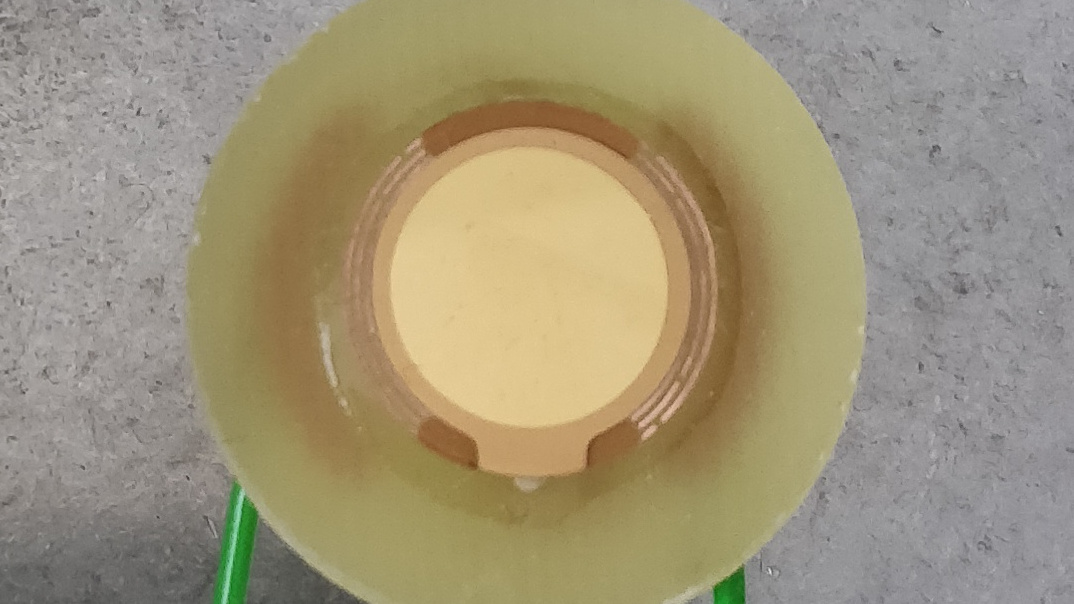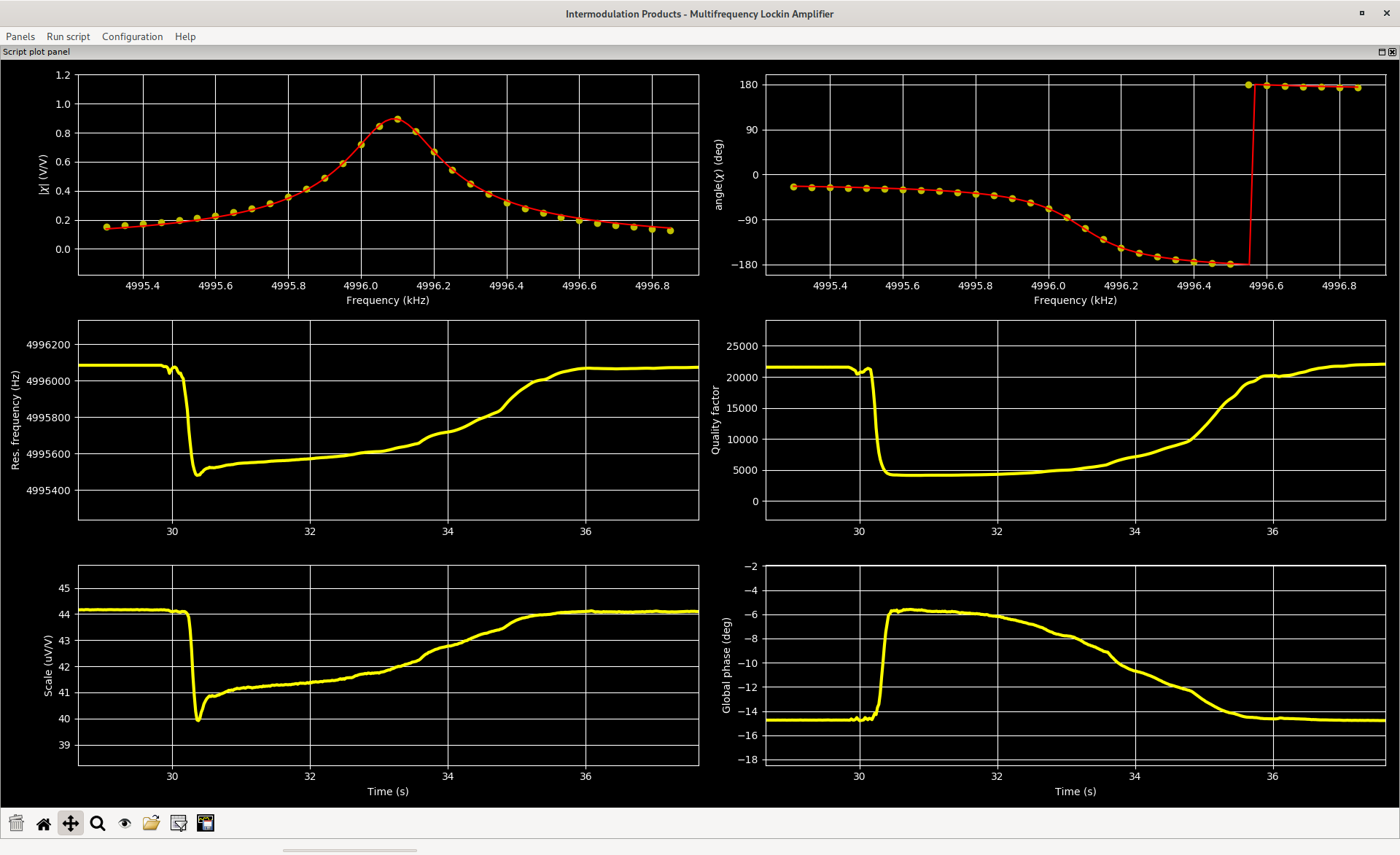Quartz cristal microbalance
A quartz crystal microbalance (QCM) measures a mass variation per unit area by measuring the change in frequency of a quartz crystal resonator. The resonance is disturbed by the addition or removal of a small mass due to oxide growth/decay or film deposition at the surface of the acoustic resonator. The QCM can be used under vacuum, gas phase, and liquid environments. It is useful for monitoring the rate of deposition in thin film deposition systems. In liquid, it is highly effective at determining the affinity of molecules (proteins, in particular) to surfaces functionalized with recognition sites.1
The resonance of a 5 MHz quartz crystal is tracked. Top panels show the instantaneous resonance curve of the crystal at the last measurement point. Lower plots show traces of four extracted parameters from the resonance curve versus time. After a few seconds the crystal was disturbed by humid air which slowly evaporate over the next 5 - 10 seconds.
Solution: By monitoring the mechanical resonance frequency and quality factor of the quartz disk one can obtain the mass absorbed to the disk surface. The Multifrequency Lock-in Amplifier MLA-3, can be used to track resonance and damping coefficients at high rates using multifrequency comb excitation. allowing for ultrafast quartz crystal microbalance.
User: Dr. Ilya Reviakine, Affiliate Professor, University of Washington - Seattle, USA

Solution: The Multifrequency Lock-in Amplifier MLA-3 was used to realize electrochemical quartz crystal microbalance. It enabled researchers from Germany to observe fast pH-driven viscosity changes in albumin solutions.
User: Prof. Diethelm Johannsmann, TU Clausthal, Germany
